
Coca-Cola's journey in India mirrors the country's growth, rising consumption and a vibrant middle class.
Gulab Ladhani, 59, a dapper bottler in Agra, proudly shows a picture in his office with former Coca-Cola chairman Neville Isdell (at that time, he was senior vice-president) drinking from the first 300-ml cola bottle launched in India from his plant.
He remembers how he had painted a large part of the city red (the brand colour of Coke) and ordered about 1,000 balloons with the Coke logo to be released close to the Taj Mahal on D-Day.
October 24, 1993, marked the second coming of Coke into India (after it was forced out by the government 16 years earlier). The world's largest beverage company chose the city of the Taj to announce its battle with global rival PepsiCo.
Ladhani worked overtime to get his Rs 8-crore (Rs 80 million) plant on the outskirts of the city ready before the deadline.
His India-made machines would churn out 400 bottles a minute, which he felt was enough to cater to about 1,500 soft drink retailers in the city. Only 10 per cent of these retailers had coolers.
...
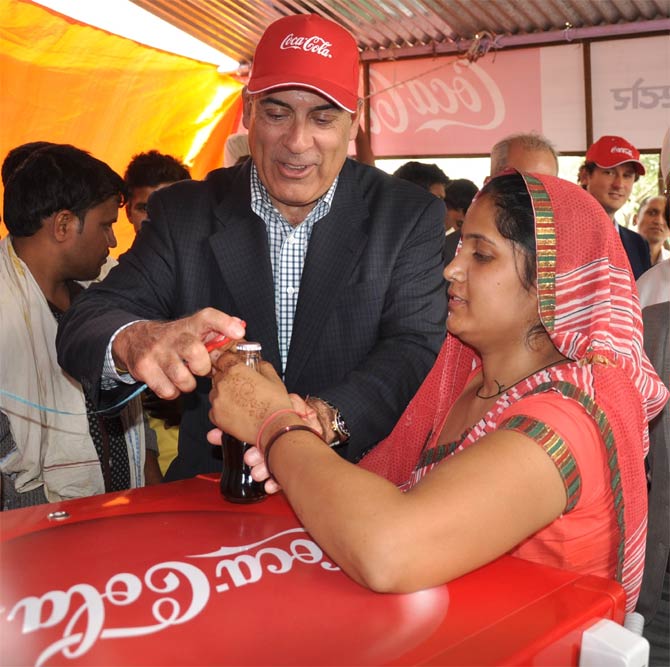
Twenty years later, Ladhani's youngest son, Ekansh, who was merely eight when Coke returned to India, is overseeing a new bottling plant near Agra.
The automated plant, which has machines imported from Italy, involves an investment of Rs 135 crore (Rs 1.35 billion). It can churn out about 1,000 bottles a minute, including PET bottles.
Ekansh feels this would meet the demand of 10,000-odd retailers in and around Agra (of whom 70 per cent have coolers). It would also meet his ambitious target of covering all the 30,000 retailers of fast-moving consumer goods (FMCG) in and around the city in a few years.
Agra is reflective of Coca-Cola's roller-coaster ride in the country in the past two decades, one that has mirrored the country's economic growth, rising consumption and vibrant middle class.
...
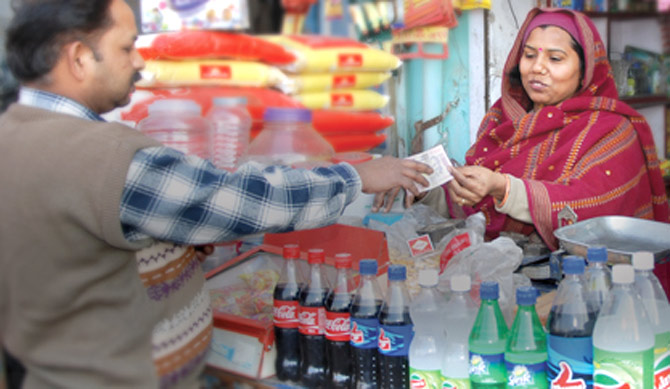
In the last two decades, the per capita consumption of soft drinks has grown sevenfold, even as the population of the country has increased 1.36 times.
Coke prices more-than-doubled during the period. About a quarter of the eight million FMCG retailers stack Coke; in 1993, only six per cent had soft drinks available.
To bring about this change, so far, Coke has invested more than $3.5 billion.
In 1992, when Coke sent its 'crack-India' team under Jaydev Raja to storm the market, PepsiCo had 40 per cent of the market; the rest was accounted by Parle.
Opportunity came knocking when Parle's Ramesh Chauhan decided to sell and called both rivals to the table. Coke outbid PepsiCo, agreeing to increase the offer price from $32 million to $40 million. And, Parle's brand and 60 per cent market share came Coke's way.
...
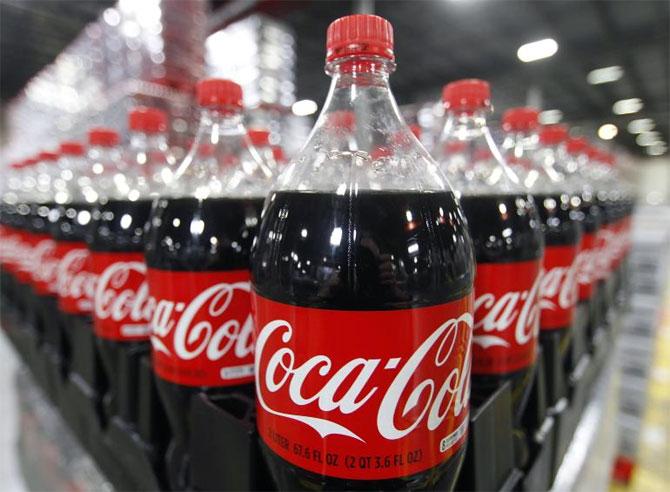
Raja's team wanted to make it difficult for PepsiCo to quickly replicate its strategy. So, instead of the 250-ml cola PepsiCo sold at Rs 5.5, Coke offered a 300-ml bottle at Rs 5.
The 300-ml bottle would go on to become the industry standard and help the company increase volumes by about half in only two years, capturing nearly two-thirds of the market.
Coke led in introducing new pack sizes such as the one-litre returnable bottle, as well as PET bottles and cans. Though it sought to launch a 200-ml bottle at Rs 5, this didn't materialise for a few years.
Coke also brought innovation -hardened plastic crates, which replaced wooden ones and reduced wear and tear of bottles, soon became an industry norm.
The company also introduced open-bay trucks to handle multi-sized packs. However, its move to launch carts with ice boxes to meet the demand in rural markets didn't exactly set the market on fire.
...
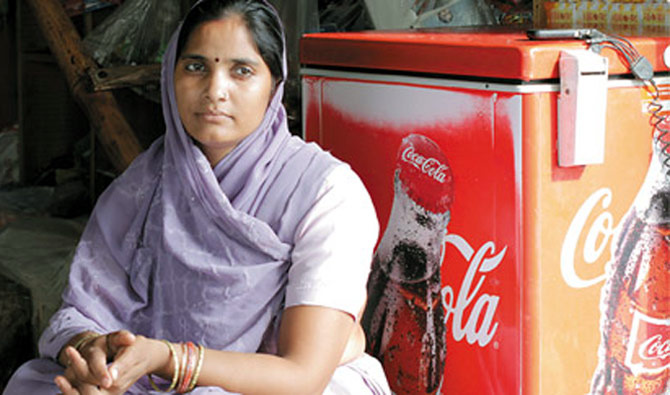
The company's formula wasn't always perfect. Initially, it tried to make a re-entry through a joint venture with Rajan Pillai, who controlled Britannia Industries. But Pillai's business empire collapsed and he came under allegations of fraud; the joint venture was aborted.
Coke also faced troubles from Parle's Chauhan. Many believed the former 'soft drinks king' wasn't happy at losing his empire.
Chauhan and his brother, who held minority equity in Gujarat Bottling Plant, a Coke bottler, decided to sell the plant to PepsiCo. Fearing its rival could buy out more such bottlers, Coke secured a restraining order preventing Gujarat Bottling Plant from bottling PepsiCo products.
In 1996, the government cleared the company's proposal to establish two subsidiaries in India, albeit with a rider that it would offload 49 per cent stake in its bottling operations in three to five years to Indian shareholders.
...

Failing to meet the deadline, Coke sought an extension, which was granted. It indicated it could meet the stipulation by issuing non-voting shares.
It was alleged the company intended to avoid public and governmental scrutiny, which it would have faced had it gone public. But it fought back successfully, claiming it should be given a "level playing field" with competitor PepsiCo; eventually, the clause was done away with.
At times, personality clashes threatened to tear the company apart. Raja's hasty exit from the country in 1995 is an instance.
In his memoirs, Isdell says Raja was attacked from two sides - the Indian media, which alleged he was killing a national icon in Thums Up; and his boss, Douglas Daft, who was in charge of Asia operations, for ignoring Coke and pushing the franchise.
Raja was also against a large consolidated company-owned bottling system in India.
...

However, Daft supported the idea, saying this would reduce costs. After Raja's exit, Daft's strategy became the cornerstone of the company's expansion; today, it accounts for about 65 per cent of the company's volumes.
Raja also failed to sign cricketer Sachin Tendulkar as brand ambassador; his bosses said this was a waste of money. PepsiCo grabbed the opportunity. In 2011, Coke signed the cricketing hero, albeit towards the end of his career.
Coke officials also made some disastrous moves. In 2002, Chief Executive Sanjiv Gupta, decided to sell 200-ml Coke bottles at a mere Rs 5. Volumes grew about 30 per cent.
However, by 2005, it became clear the Rs 5 strategy wasn't sustainable and Coke was bleeding. Gupta quit and Atul Singh, who replaced him as chief executive, decided to raise the price of the 200-ml bottle to Rs 7. Today, it stands at Rs 10. An aggressive Chota Coke was history!
...
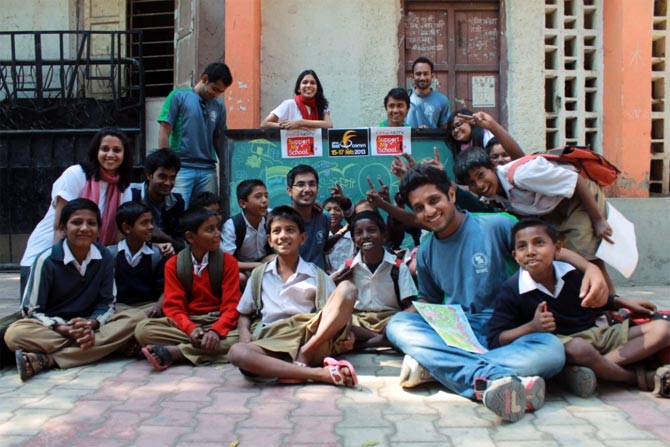
In 2003, Delhi-based Centre for Science and Environment brought out a damning report that said Coke and Pepsi contained pesticides and insecticides exceeding European Economic Commission standards.
Coke denied the findings. In US Securities and Exchange Commission filings in 2003, the company admitted its volumes in India fell 11 per cent during the third quarter of 2003. Owing to pressure, schools stopped stacking carbonated drinks on their premises.
Slowly, the company put its act together. It roped in actor Amir Khan for a campaign, in which the actor assured the product was safe.
Bottlers were pushed to buy modern seven-stage filtration process machines, instead of four-stage ones. It secured commitments from all bottlers that they would set up rain-water harvesting methods.
In 2006, when the pesticides controversy erupted again, Coke was well prepared. Today, the company claims it replenishes whatever underground water is consumed for making the product.
...

Back in Agra, Mukul Goyal, who owns Savon Sweets and Snacks, remembers how the shop had stacked about 40 crates of cola on October 24, 2003, to meet the demand. At that time, his was the only store within a two-and-a-half-km radius with a cooler.
Today, Goyal has about 10 other retailers within a 500-metre area, all of whom have coolers. However, he still sells more than double of what he used to 20 years ago, thanks to one of the world's most iconic brands.
In search of the next million
Last year, Coca-Cola Company Chief Executive Muhtar Kent announced he wanted India to become the company's fifth-largest market, in terms of volumes; currently, it ranks seventh. For this, the company would invest about $5 billion through the next eight years, he added.
Atul Singh, deputy president (Pacific group) , says the company hopes to increase its retail penetration by about 50 per cent in two-three years, adding about a million customers. He wants all existing brands to be available across outlets.
...

Coke isn't experimenting with too many new products. Instead, it is focusing on deeper penetration of existing products.
Reaching out to the next million customers would require partners. In rural India, Coke is already experimenting with the hub-and-spoke system, for which it is partnering distributors.
Company sources say Coke is looking at roping in exclusive distributors, as they might have to invest about Rs 20 lakh (for trucks, warehouse, etc).
For Coca-Cola, the number of outlets with chillers has nearly doubled to about 6,00,000 through three years. In the next few years, the company wants at least 70 per cent of its three million retail outlets to serve the soft drink cold.
With per capita consumption of only 14 Coke bottles, against the global average of 90, the Indian market is still in its infancy.